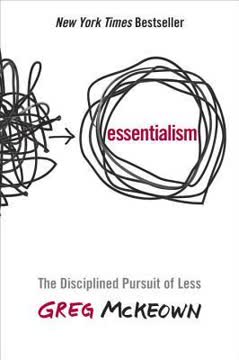重点摘要
1. 观察而不评判以促进富有同情心的沟通
NVC的第一个组成部分是将观察与评判分开。
观察与评判。 NVC强调区分我们观察到的事实和我们对这些观察的解释或判断的重要性。这种技能使我们能够更清晰地沟通,并减少他人产生防御反应的可能性。
- 观察的例子:
- “我看到水槽里有脏盘子”(观察)
- “你很懒”(评判)
- “报告在截止日期后两天提交”(观察)
- “你不负责任”(评判)
通过关注具体、可观察的行为而不是泛化或判断,我们为更富有成效和同情心的沟通奠定了基础。这种方法帮助我们避免引发防御反应,并为真正的对话和理解打开了大门。
2. 准确识别和表达情感以提高自我意识
对许多人来说,清晰地表达我们所感受到的情感是困难的。
情感素养。 发展丰富的情感表达词汇对于有效沟通和自我意识至关重要。NVC鼓励我们超越“好”或“坏”这样的模糊术语,使用更具体的情感描述。
- 当需求得到满足时的常见情感:
- 喜悦、兴奋、满足、宽慰
- 当需求未得到满足时的常见情感:
- 挫折、焦虑、失望、悲伤
通过准确识别和表达我们的情感,我们变得更加敏锐地感知内心体验,并更好地与他人沟通。这种情感清晰度帮助我们与自己和他人建立更深的联系,促进关系中的同理心和理解。
3. 将情感与需求联系起来以理解潜在动机
每种情感的根源都是一种需求。
基于需求的视角。 NVC认为所有人类行为都是为了满足普遍的人类需求。通过将我们的情感与这些潜在需求联系起来,我们可以深入了解自己的动机以及他人的动机。
常见的普遍需求:
- 身体健康(食物、住所、休息)
- 自主性(选择、自由、空间)
- 连接(爱、理解、尊重)
- 意义(目的、贡献、成长)
理解情感背后的需求使我们能够对自己的情感体验负责,并更有效地沟通。我们可以表达需求并共同努力找到满足所有人需求的解决方案,而不是责怪他人。
4. 提出明确、积极的请求以丰富生活
表达你所请求的内容,而不是你不请求的内容。
积极行动语言。 NVC强调提出明确、具体的请求,而不是专注于我们不想要的东西。这种方法增加了满足需求的可能性,并减少了混淆或抵触。
有效请求的要素:
- 使用现在时的积极语言
- 具体且具体
- 请求可观察的行为
- 使其可行
示例转换:
- 无效:“别这么不体贴!”
- 有效:“如果你会迟到超过15分钟,你愿意发短信告诉我吗?”
通过以积极、可操作的术语提出请求,我们为他人贡献我们的福祉创造了明确的路径,促进合作和相互理解。
5. 练习同理心倾听以加深联系
同理心在于我们能够在场。
在场与理解。 同理心倾听涉及完全专注于对方的信息,放下自己的想法、判断和提供解决方案的欲望。这种深度倾听使我们能够与言语背后的情感和需求建立联系。
同理心倾听的步骤:
- 全神贯注于说话者
- 关注情感和需求,而不仅仅是言辞
- 反映你所听到的以确保理解
- 允许沉默并尊重说话者的过程
通过练习同理心倾听,我们为他人创造了一个安全的空间,使他们能够充分表达自己,促进更深的联系和相互理解。这种技能在冲突解决和建立牢固关系中尤为宝贵。
6. 使用保护性力量而非惩罚性措施
保护性力量的意图仅仅是保护,而不是惩罚、责备或谴责。
保护与惩罚。 NVC区分了用于保护的力量和用于惩罚的力量。保护性力量旨在在没有判断的情况下防止伤害,而惩罚性措施则试图让他人为被认为的错误行为受苦。
保护性力量的特征:
- 关注即时安全
- 避免责备或判断
- 寻求教育和理解
- 保持对所有各方的尊重
通过从惩罚性方法转向保护性方法,我们可以在不妥协价值观或破坏关系的情况下处理挑战性情况。这一原则适用于育儿、教育和冲突解决,促进更富有同情心和有效的处理困难行为的方法。
7. 通过关注需求而非立场来解决冲突
当你建立联系时,问题通常会自行解决。
基于需求的冲突解决。 NVC通过关注所有各方的潜在需求而不是他们的立场来解决冲突。这种视角的转变通常会揭示共同点并打开创造性解决方案的大门。
NVC冲突解决的步骤:
- 识别所有各方的观察、情感、需求和请求
- 同理心理解每一方的观点
- 寻找满足所有人需求的策略
- 提出明确、可行的请求
通过专注于需求而不是责备或固定立场,我们可以将冲突转化为相互理解和成长的机会。这种方法在各种环境中都取得了成功,从个人关系到国际外交。
8. 表达感激以庆祝而非操控
表达感激以庆祝,而不是操控。
真诚的感激。 NVC鼓励以庆祝他人对我们生活的积极影响的方式表达感激,而不是将赞美作为操控或控制的工具。
NVC感激的组成部分:
- 具体的行为对福祉的贡献
- 满足的需求
- 满足这些需求所产生的情感
示例:
- 传统:“你是个很棒的朋友。”
- NVC:“当你昨天听我说了一个小时时,我感到宽慰和支持。这满足了我在困难时期对理解的需求。”
通过这种方式表达感激,我们加深了与他人的联系,并培养了真诚感激和相互关爱的文化。
9. 通过NVC从文化条件中解放自己
我们可以从文化条件中解放自己。
自我意识和选择。 NVC帮助我们识别并超越从文化中内化的限制性信念和行为。通过意识到我们的条件反应,我们可以选择更有生命力的思维和沟通方式。
需要审视的文化条件领域:
- 判断性思维
- 否认责任
- 要求与请求
- 惩罚性与保护性方法
通过练习NVC,我们发展了更大的自我意识和有意识选择反应的能力,而不是根据文化编程自动反应。这种解放允许我们与自己和他人进行更真实和富有同情心的互动。
10. 在各种情境中应用NVC以获得变革性结果
NVC可以改变世界。更重要的是,它可以改变你的生活。
多功能应用。 NVC原则可以应用于广泛的环境,从个人关系到专业环境,甚至国际冲突。其多功能性使其成为在各个层面上实现积极变革的强大工具。
NVC应用的情境:
- 亲密关系
- 育儿和教育
- 工作场所沟通
- 治疗和咨询
- 社区建设
- 政治对话和调解
通过在生活的不同领域中一致地应用NVC原则,我们可以创造出富有同情心的沟通和理解的连锁反应。这种方法不仅有可能改变个人生活,还可以为更和平和富有同情心的世界做出更广泛的社会变革贡献。
最后更新日期:
FAQ
What's Nonviolent Communication: A Language of Life about?
- Compassionate Communication Focus: The book introduces Nonviolent Communication (NVC), a method developed by Marshall B. Rosenberg that emphasizes understanding and connection through compassionate dialogue.
- Four Key Components: NVC consists of observations, feelings, needs, and requests, which help individuals express themselves honestly and empathize with others.
- Transformative Impact: It illustrates how NVC can transform relationships by reducing conflict and enhancing empathy, offering practical tools for resolving disputes.
Why should I read Nonviolent Communication: A Language of Life?
- Improve Communication Skills: The book provides techniques to enhance interpersonal communication, making it easier to express needs and understand others.
- Promote Compassion: NVC encourages a compassionate approach, leading to deeper connections and reduced conflict, valuable in today's divisive climate.
- Versatile Application: Concepts are applicable in personal, educational, and professional contexts, making it a useful resource for improving interactions.
What are the key takeaways of Nonviolent Communication: A Language of Life?
- Empathy is Central: Understanding others' feelings and needs is crucial for effective dialogue and conflict resolution.
- Responsibility for Feelings: Readers learn to take responsibility for their own feelings and needs, leading to healthier relationships.
- Clear Requests: The book emphasizes making clear, actionable requests to foster cooperation and understanding.
What are the best quotes from Nonviolent Communication: A Language of Life and what do they mean?
- “Words are windows, or they’re walls.”: Highlights the power of language in shaping relationships, where compassionate communication opens connections.
- “People are disturbed not by things, but by the view they take of them.”: Emphasizes that perceptions shape emotional responses, encouraging responsibility for feelings.
- “When we are in contact with our feelings and needs, we humans no longer make good slaves and underlings.”: Speaks to empowerment through recognizing and expressing needs.
How does the NVC process work in practice?
- Observations: State what you observe without judgment, describing situations factually to avoid defensiveness.
- Feelings: Express how you feel about the observation, connecting emotionally to help others understand your perspective.
- Needs: Identify the needs connected to your feelings, shifting focus from blame to understanding what is important.
- Requests: Make a clear, specific request for action, allowing for constructive dialogue and cooperation.
How does Nonviolent Communication address conflict resolution?
- Empathy in Conflict: Emphasizes understanding the feelings and needs of all parties to find common ground and solutions.
- Transforming Criticism: Encourages expressing needs and making requests instead of criticizing, reducing defensiveness.
- Practical Mediation Steps: Provides steps for mediating conflicts, including empathic listening and articulating feelings and needs.
What role does empathy play in Nonviolent Communication: A Language of Life?
- Foundation of Connection: Empathy is the cornerstone of NVC, enabling deeper connections and understanding.
- Defusing Conflict: Empathizing with others can defuse potential conflicts, focusing on mutual understanding.
- Self-Empathy: Recognizing and validating one's own feelings and needs enhances emotional well-being and self-acceptance.
How can I apply the principles of NVC in my daily life?
- Practice Active Listening: Focus on hearing others' feelings and needs, enhancing empathy and understanding in conversations.
- Express Yourself Clearly: Use the four components of NVC to articulate your feelings and needs, fostering compassionate responses.
- Make Conscious Requests: Frame requests positively and specifically, encouraging cooperation and reducing perceived demands.
How does Nonviolent Communication suggest overcoming the fear of expressing needs?
- Value of Needs: Recognize that expressing needs is natural and essential, reducing fear associated with vulnerability.
- Practice Self-Empathy: Become comfortable with your own needs through self-empathy, empowering confident expression.
- Start Small: Begin with manageable requests to build confidence, gradually addressing more significant issues.
What are some common barriers to effective communication discussed in Nonviolent Communication?
- Moralistic Judgments: Identifies judgments as barriers, where statements like “You are selfish” alienate others.
- Denial of Responsibility: Many attribute feelings to others’ actions, leading to blame and conflict.
- Comparisons and Labels: Using comparisons or labels creates divisions, hindering productive dialogue.
How does Nonviolent Communication address anger and conflict?
- Understanding Anger: Teaches that anger results from unmet needs and judgments, transforming it into constructive dialogue.
- Expressing Anger Constructively: Focuses on feelings and needs rather than blame, encouraging open communication.
- Conflict Resolution Framework: Emphasizes empathy and understanding, fostering collaboration and mutual respect.
How can I cultivate self-compassion through NVC?
- Recognize Self-Judgments: Identify and challenge negative self-talk, developing a compassionate inner dialogue.
- Practice Self-Empathy: Acknowledge your feelings and needs, validating experiences and fostering self-acceptance.
- Shift Focus to Needs: Focus on unmet needs instead of mistakes, leading to a constructive perspective on growth.
评论
《非暴力沟通》获得了大多数正面评价,读者称赞其改善沟通和解决冲突的实用方法。许多人认为这本书改变了他们的生活,提供了有效表达情感和需求的宝贵见解。一些人批评其内容重复性和潜在的操控性。读者们欣赏书中提供的大量真实案例和练习。尽管有些人觉得语言初期有些别扭,许多人报告在各种关系中成功应用了这些技巧。一些评论者对这本书在解决系统性不公正问题上的适用性表示担忧。
Similar Books

















